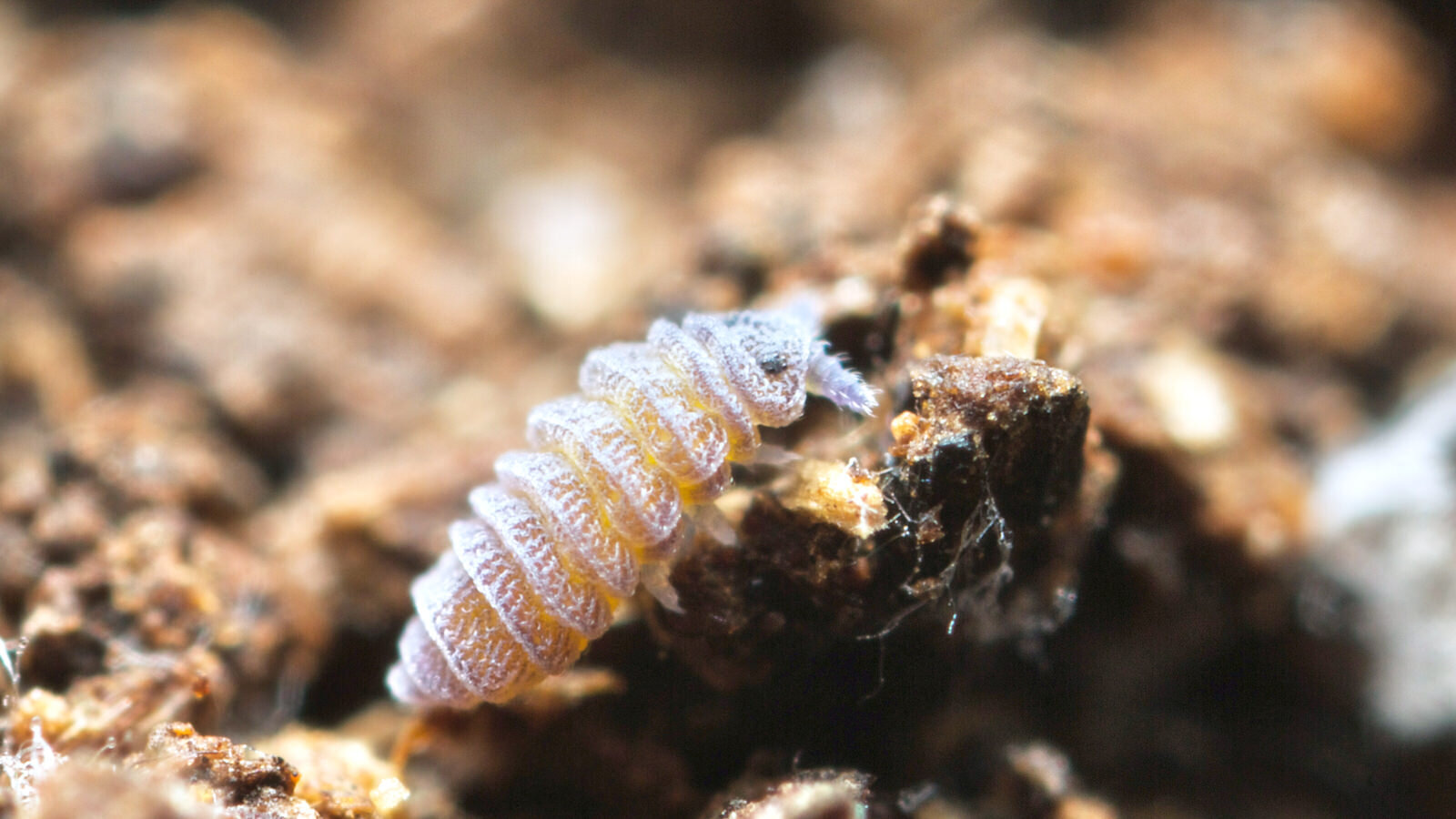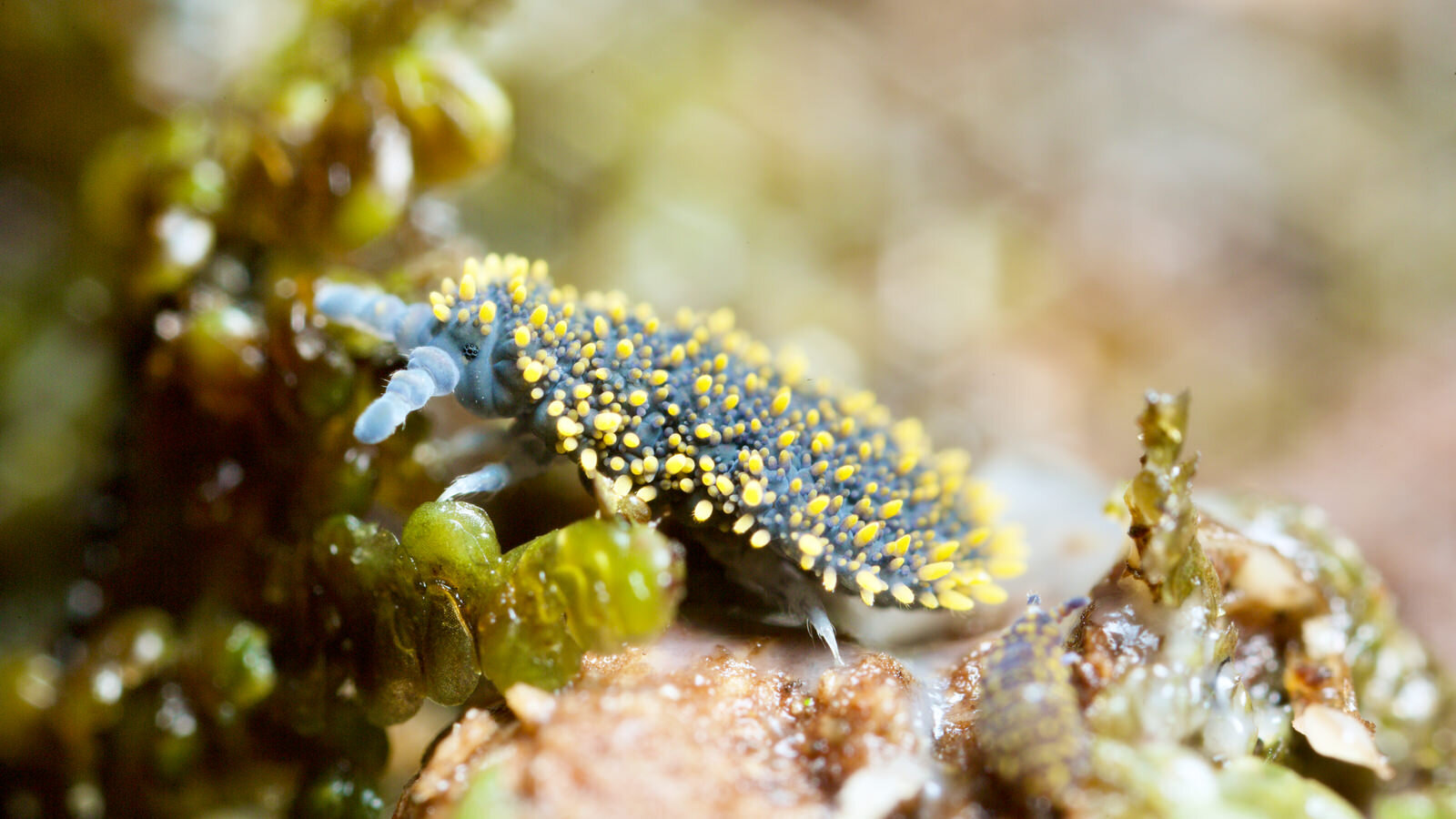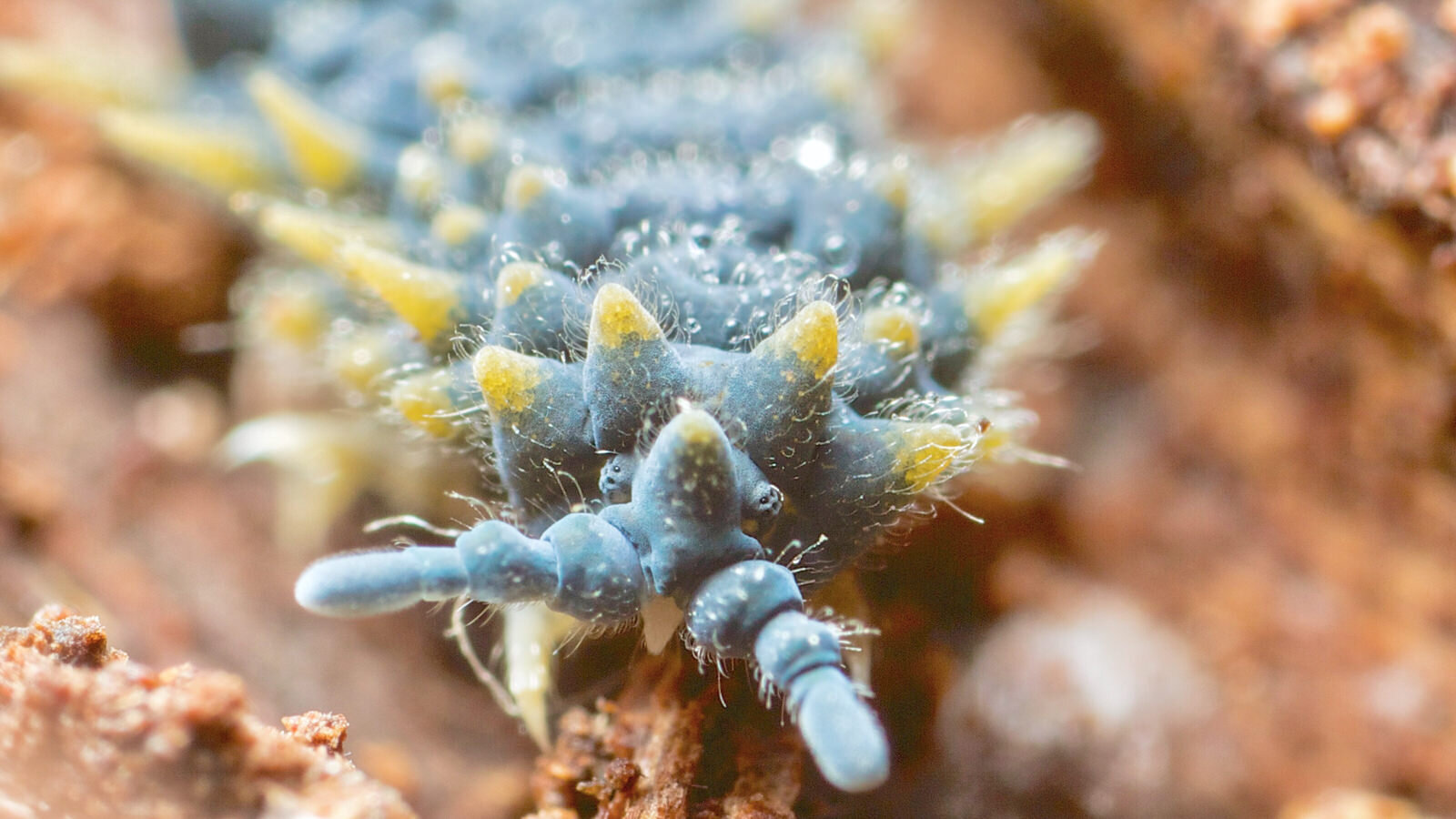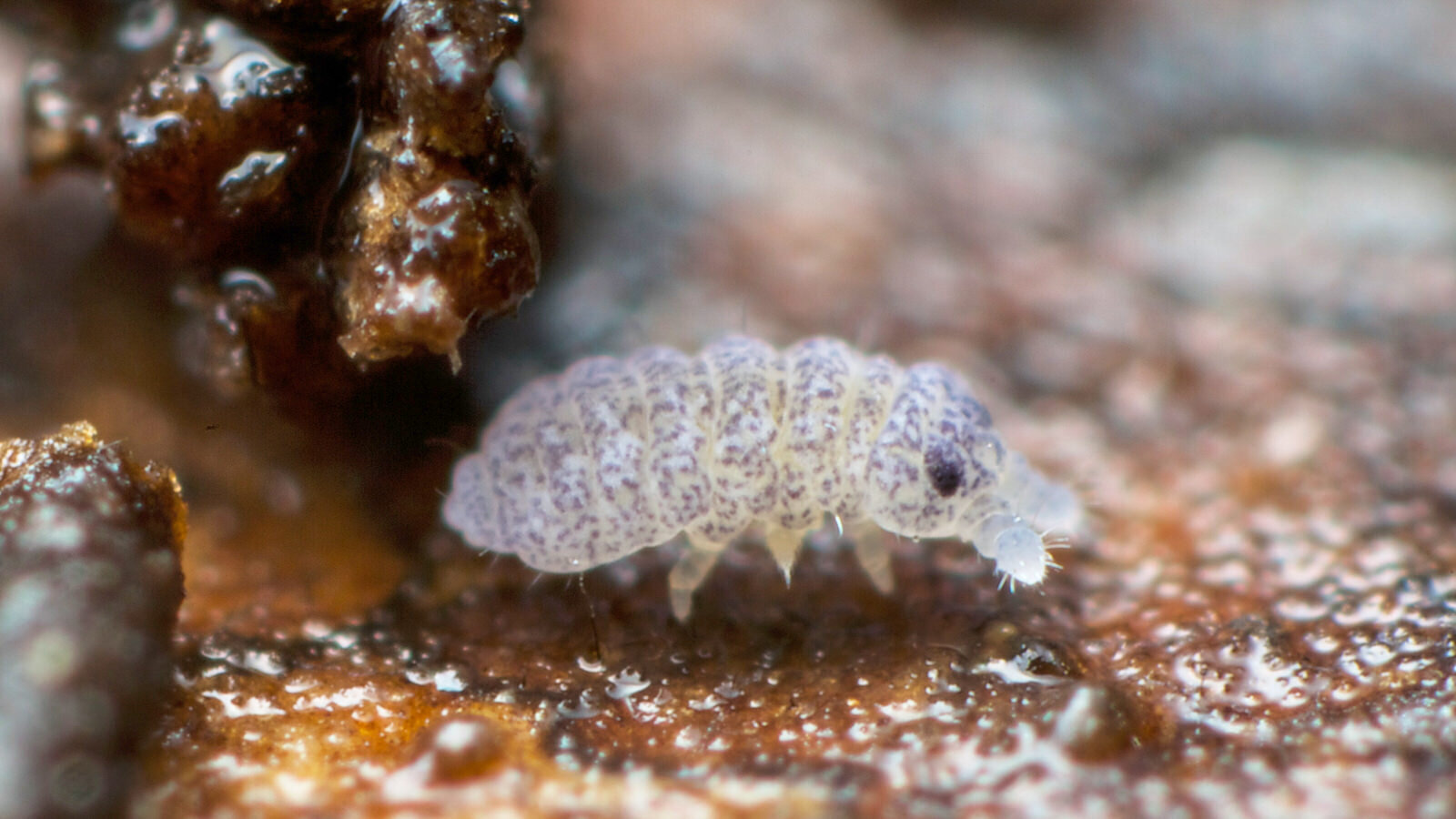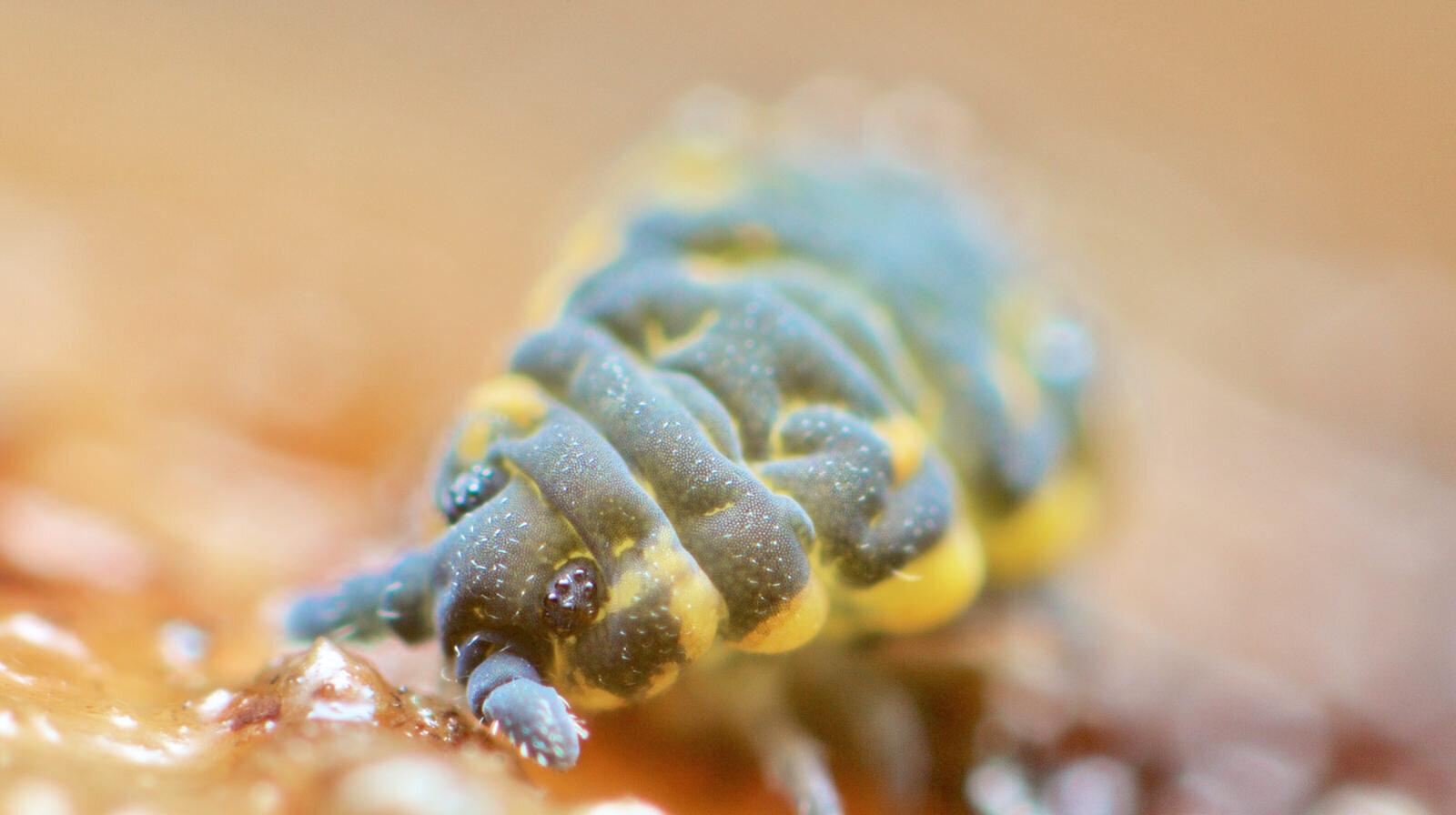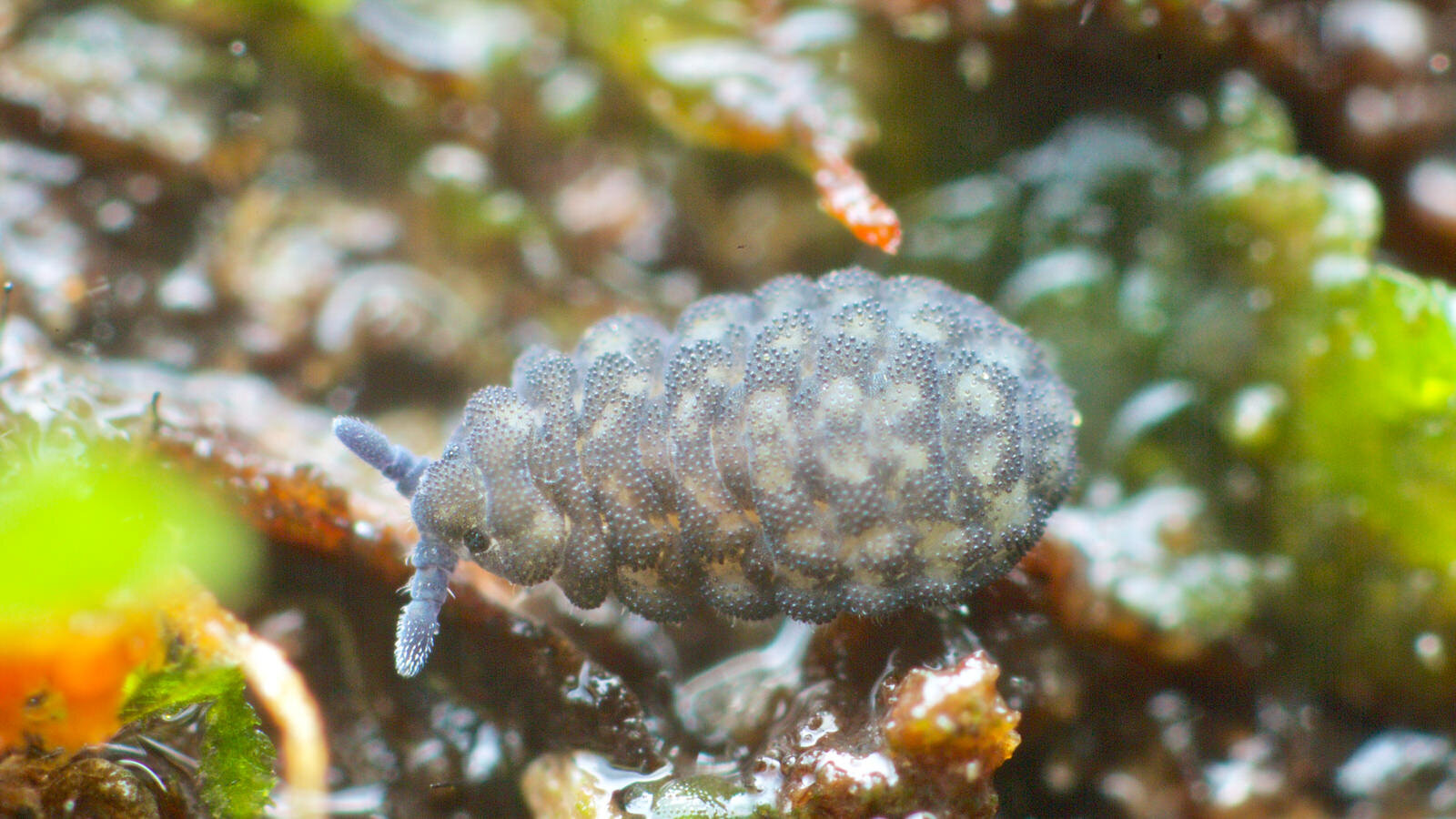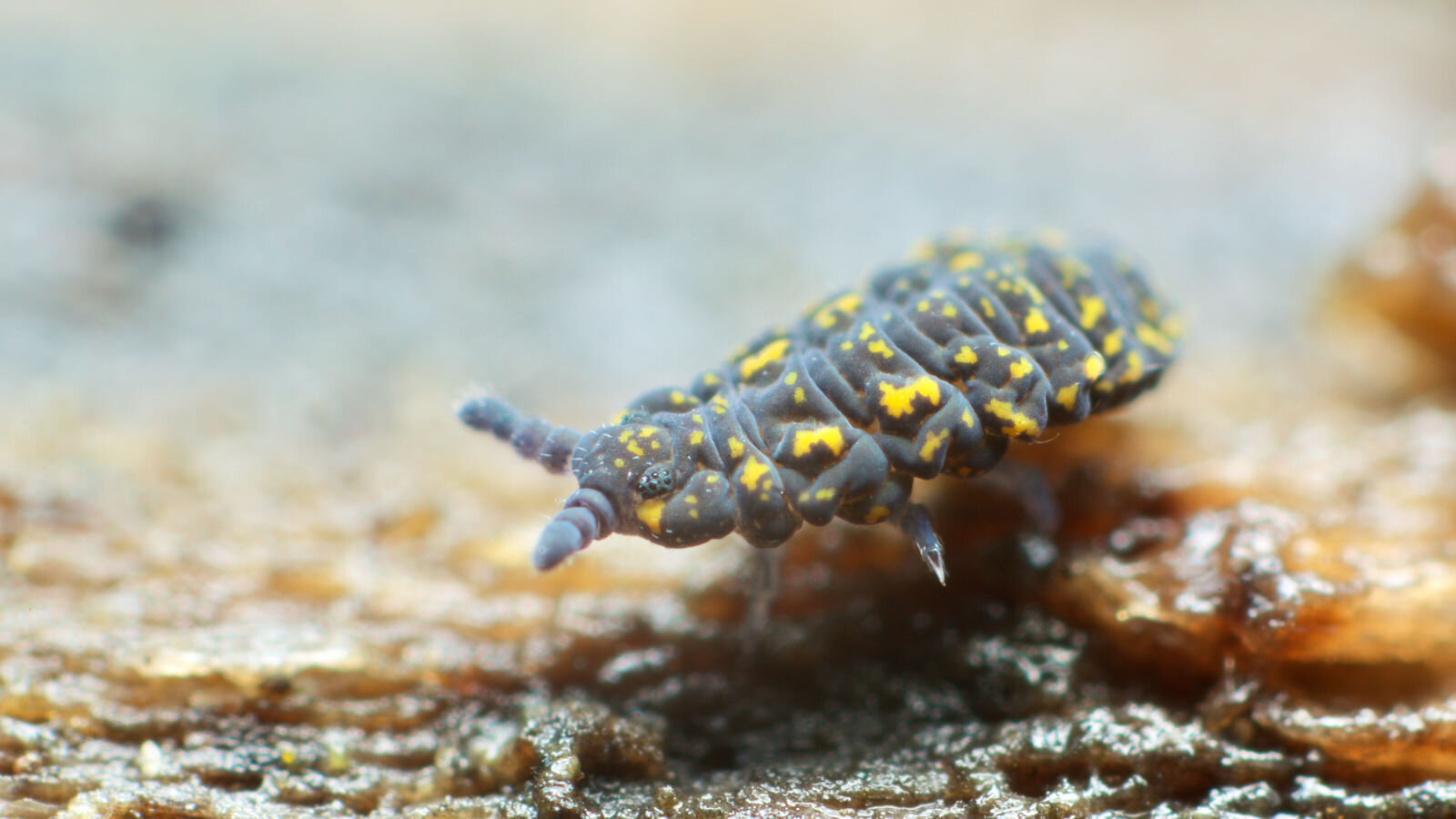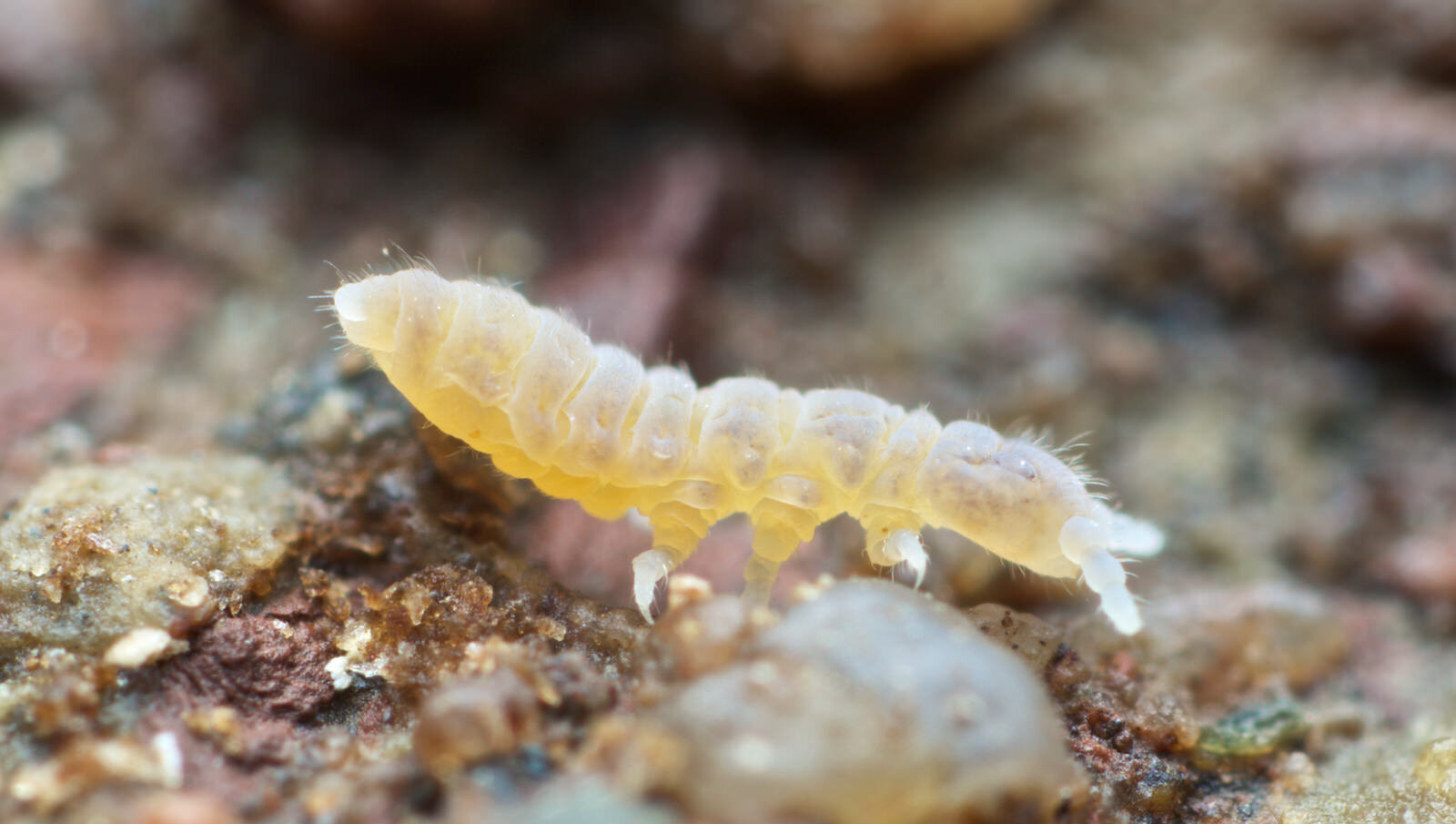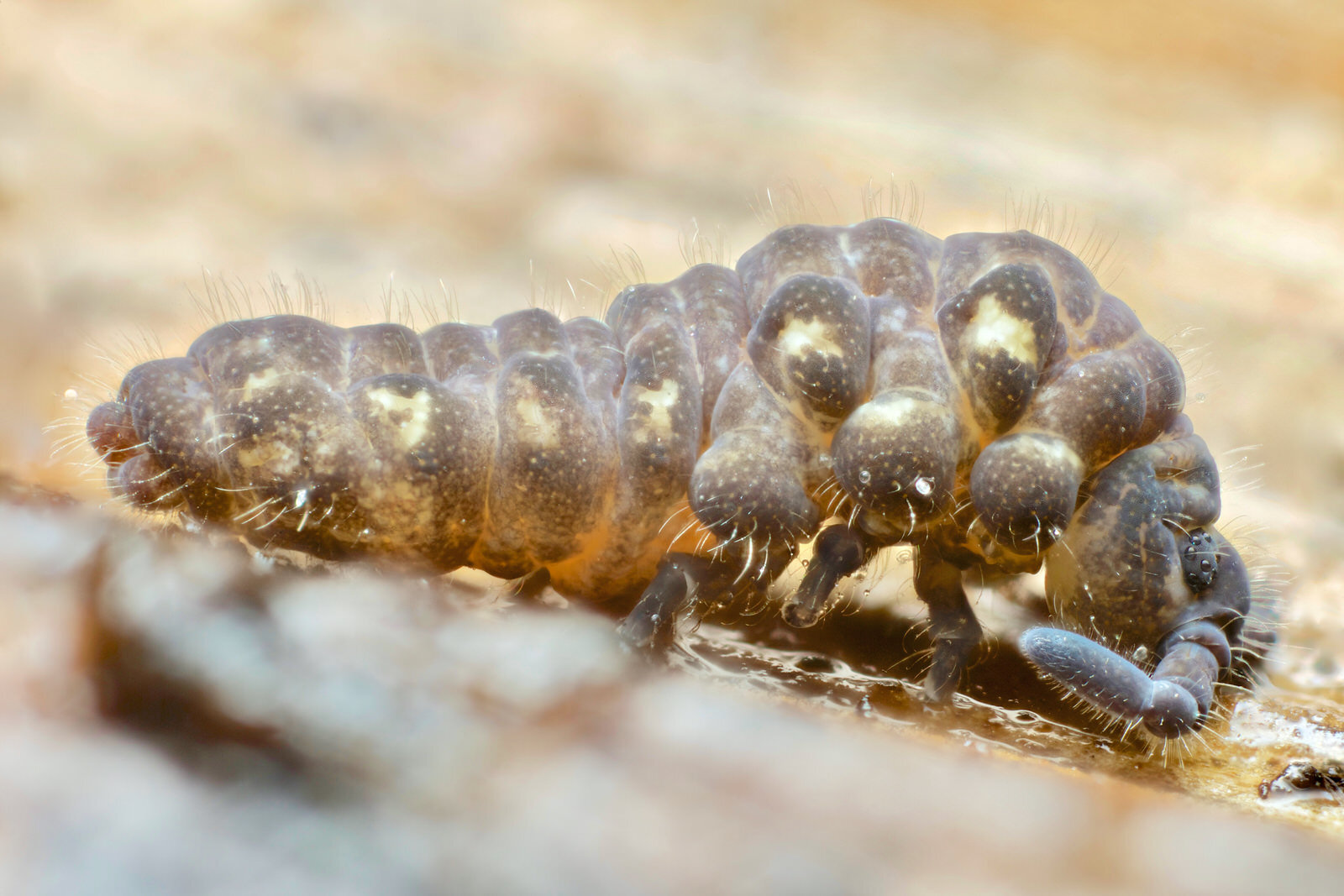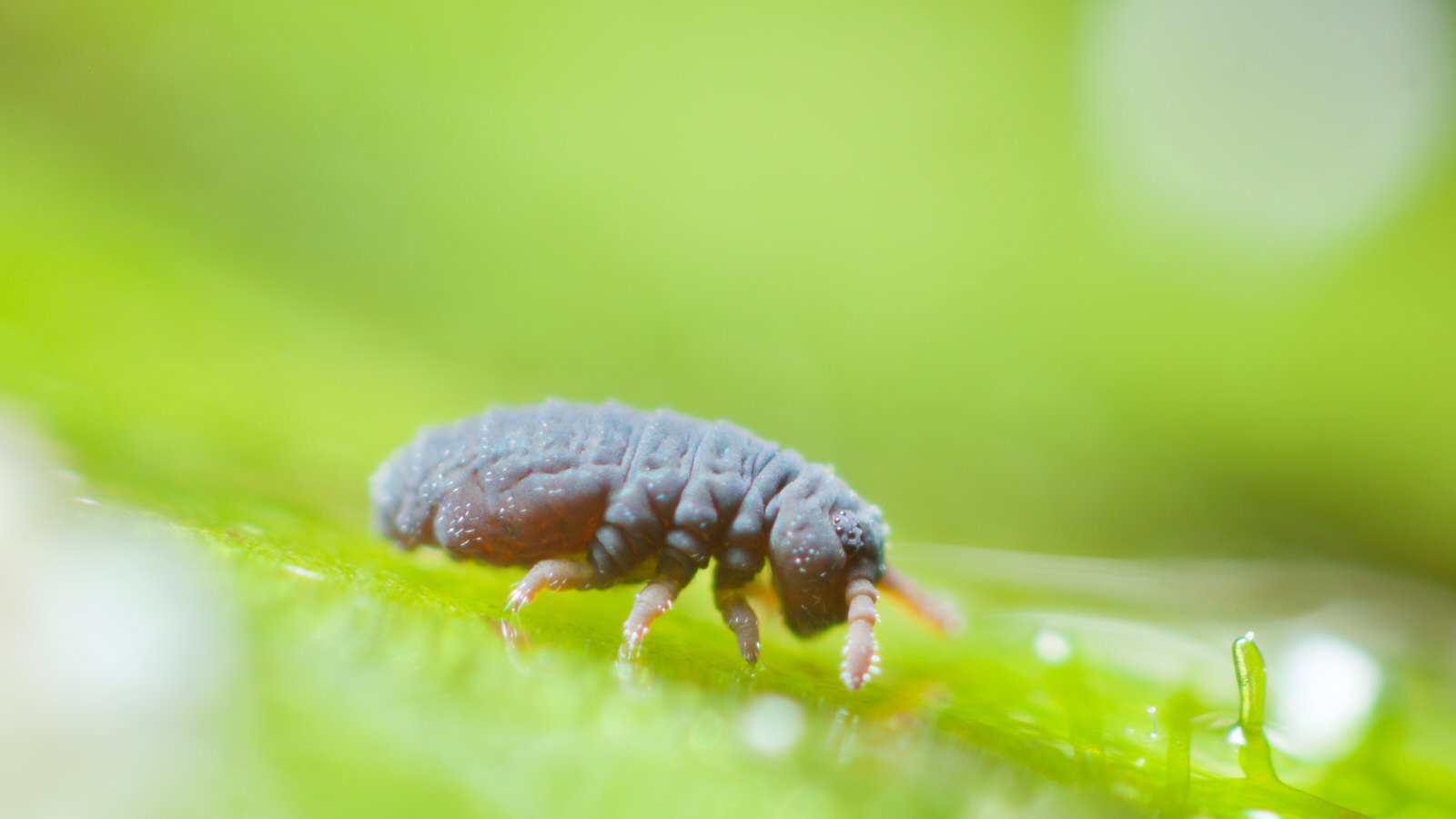
Poduromorpha
The Poduromorpha are the jelly fruits of the Collembola. They have short stubby legs and a usually plump, often flattened body.
The character in the title picture, a Podura aquatica, lends its name to the entire group. It's an unusual animal, being pretty much the only genus and species in its own family. They also have a strange, fully aquatic life cycle, laying eggs that drop to the bottom of the water. When hatched, the young have a hydrophobic cuticle, so are immediately thrust upward and out onto the water surface, where they spend the rest of their lives.
Onychiurids on a log with a New Zealand coin
Some genera of Poduromorpha live in large groups, drawn together by aggregation pheromones like this mass of Onychiurids in the above photo, sightless, white, soil dwelling Collembola. If you look closely, amongst the white, there are occasional flashes of pink- Triacanthella purpurea.
Onychiurids are often very hard to identify to genera without a microscope, although these ones are unlikely to be native, and were probably introduced to this urban setting in Oban, Stewart Island, New Zealand from Europe.
A close up of a single Onychiurid…
Possible native Onychiurid, Melbourne Botanical Gardens, Australia, 2014
The families in Poduromorpha also exhibit some amazing and bizarre differences in shape, with the naturally water-repelling granular cuticle warping and changing between genera, sometimes with mounds and tubercles rising regularly over the body like a 1960s swimming cap. Others fatly expand, leaving a tiny head half-buried beneath a waddling, mounded body, or flatten, spreading out to an undulating frill, legs half hidden beneath the overhang.
Many Onychiuridae and other furca-less or furca-reduced genera of the Poduromorpha have evolved non-springing chemical defences instead, exuding hemolymph to repel attackers. Other springtails, both with and without furcas, have anal spines which can have a defensive and anchoring effect. Stop snickering at the back.
Neonaphorura duboscqi Street, Somerset, UK
Neonaphorura duboscqi, a member of the subfamily Tullbergiinae has six anal spines. Octodontophora ornata on the other hand has up to nine anal spines, the most of any of the Collembola.
Anurida granaria
The white, sightless springtail above is Anurida granaria, a cosmopolitan species with a huge Northern hemisphere range. Unfortunately, it has also been transplanted into Australia and New Zealand by human activity, where it thrives. But because of this, its ability to bioluminesce was first noticed in 1982 by a New Zealander, Graham East, living near Christchurch, when he turned some wood over in his back garden. It's probable that the bioluminescence is some sort of defensive strategy, as there is just a brief flicker of green for a few seconds when disturbed. This isn't something usual for springtails, and especially unexpected in such a well known species.
